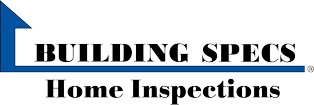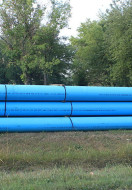Building Specs wants home owners to know what they need to do prior to a home inspection on a property that you are selling. Many of these items may be taken care of with little or no cost. Some of these items will indicate to the Home Inspector and Buyer, that the house has been maintained.
- 1. Remove grade or mulch from contact with siding. Preferably 6 or more inches of clearance.
- 2. Clean out dirty gutters or debris from the roof.
- 3. Divert all water away from house, i.e. downspouts, sump pump, condensation drain, etc. Grade should slope away from structure. Clean out basement entry drains.
- 4. Trim trees, roots and bushes back from foundation, roof, siding, and chimney.
- 5. Paint all weathered exterior wood, and caulk around trim, chimneys, windows and doors.
- 6. Seal asphalt driveways if cracking.
- 7. Seal or point up masonry chimney caps. Install metal fluecap.
- 8. Clean or replace HVAC filter. Clean dirty air returns
and plenum. - 9. Point up any failing mortar joints in brick or block.
- 10. Test all smoke detectors, install CO detectors if needed.
- 11. Update attic ventilation if none is present.
- 12. Clean & service chimney, fireplace, or woodstove (provide a copy for buyer).
- 13. Seal masonry walls in basement if old stains are present..
- 14. Don't do quick cheap repairs, i.e. (giant caulk repairs) this will clue in an Inspector that amateur work has been done and will tend to make him/her look closer at the house.
- 15. Put all windows and doors in proper operating condition, including any cracked windows.
- 16. Put all plumbing fixtures, toilet, tub, shower, sinks, in proper working condition. Look for any visible leaks.
- 17. Install GFCI receptacles near all appropriate areas, test all present GFCI receptacles for proper operation.
- 18. Check sump pump for proper operation and inspect condition of crock (pit) and drain-tile if present.
- 19. Replace any burned out light bulbs.
- 20. Remove rotting wood, firewood from contact with house.
- 21. Proper grading recommended under deck, filter cloth
and gravel. - 22. Peroxide in sump pump or condensate drain will reduce odors and bacteria.
- 23. Caulk all exterior wall penetrations.
- 24. Caulk all tub/shower fixtures.
- 25. Caulk along tub/floor, tub/walls, tub/shower/glass doors.
- 26. Check that crawlspace is dry and install a proper vapor barrier. Remove any visible moisture from crawlspace. Moisture levels in wood should be below 20%, to deter rot and mildew.
- 27. Check that bath vents are properly vented.
- 28. Remove paints, solvents, gas, etc. from crawlspace, basement, attic, porch, etc.
- 29. Check that toilets are secure to floor.
- 30.30Check that toilet are not condensating or cracked.
- 31. Where windows are at or below grade install window
wells and covers. - 32. Remove grade from contact with foundation vents.
- 33. Have clear access to all attic, crawlspace, heat systems, garage and other areas that will need to be inspected.
- 34. If house is vacant be sure all utilities are turned on: water, electric, water heater, furnace, air conditioning, and breakers in main panel.
- 35. Be aware of product failures such as: EIFS (Synthetic Stucco), Aluminum Wiring, Polybutylene, FPE Panels, Federal Pacific Stab-Lok,Omega Sprinlker Heads and FRT Plywood
Have your house pre-inspected to reduce the chance of last minute surprises and expenses.







